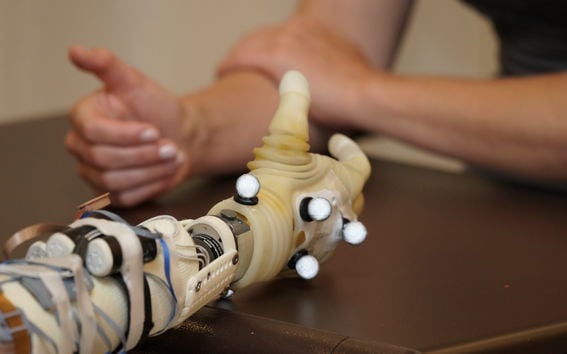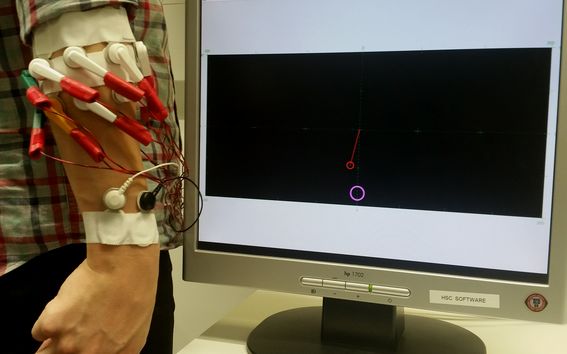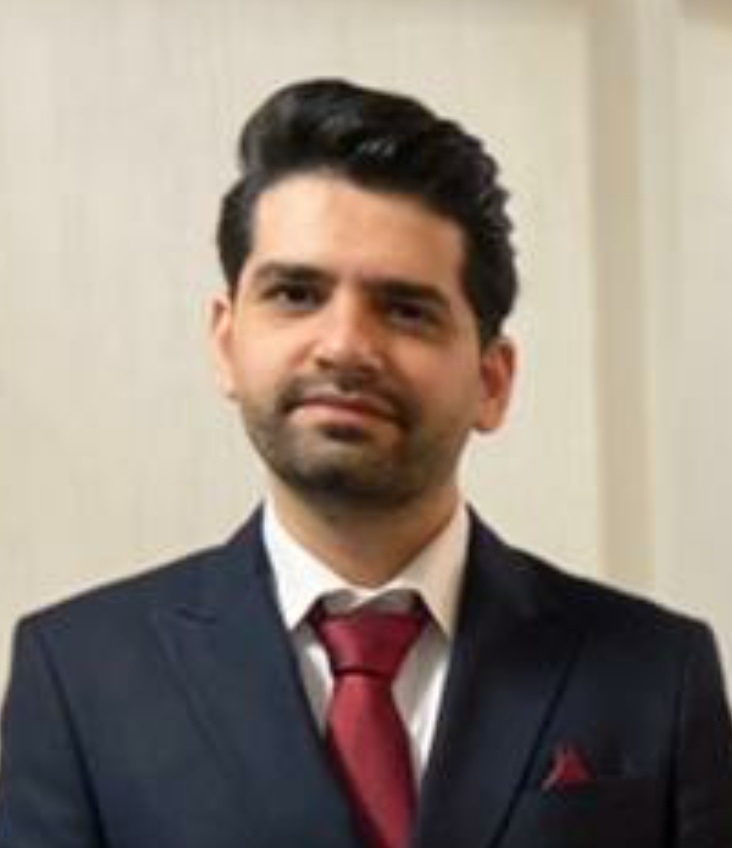Bionic and Rehabilitation Engineering

Bionic and Rehabilitation Engineering (BaRE) research group investigates engineering techniques for human-machine interfacing in order to support, augment and rehabilitate human motor function. Through advancements in basic physiology, motor control, and biomechanics, we tailor novel biosensing and control approaches, as well as design methodologies in order to push the boundaries of current state-of-the-art bionic limbs, exoskeletons and rehabilitation robots.
BaRE Research Group is located at the Aalto Health Technology House in Otakaari 3. In this unique environment, the group strives to combine the basic principles of human neuromuscular physiology with modern day technology in order to address some of the major questions in the areas of bionics and rehabilitation. BaRE is strongly committed to translational activities through which it ensures that the conducted research has a direct impact in the clinical and real-world environment.

Bionic limbs, as a mean of functional restoration of the missing human function as well as human augmentation, are one of our main investigation topics. Through physiologically inspired interfacing links, we are aiming at providing natural and dexterous control of prosthetic systems. Moreover, we are interested in restoring the missing sensory components in order to “close the control loop” and provide an enhanced user experience. Finally, BaRE is focused on the user-centered design and therefore we are investigating the characteristics of clinical and daily application of bionic systems in order to understand and better quantify the performance of the developed solutions.

Wearable robots and robotic rehabilitation is a field in which we are striving to provide state-of-the-art technological solutions in order to deliver tailored therapies and assistance to those in need. Through intimate human-robot interfaces, we are looking to establish a collaborative and stimulating environment that can not only provide the required support, but also deliver highly engaging therapies at home or in clinics. While studying the interaction of the man and the machine at both biomechanical and neural levels, we are aiming to understand how body reacts to the applied technologies. Accordingly, we are looking to devise the best solutions that promote the ultimate synergy between the two.
Bionic and Rehabilitation Engineering research group is led by prof. Ivan Vujaklija ([email protected])
Group members
Latest publications
Long-term Functional and Clinical Outcome of Combined Targeted Muscle Reinnervation and Osseointegration for Functional Bionic Reconstruction in Transhumeral Amputees : A Case Series
High-density EMG reveals atypical spatial activation of the gastrocnemius during walking in adolescents with Cerebral Palsy
High-fidelity interfacing for bionic rehabilitation
Adaptive HD-sEMG decomposition: towards robust real-time decoding of neural drive
Minimum Time Headway in Platooning Systems Under the MPF Topology for Different Wireless Communication Scenario
Machine learning based iterative learning control for non-repetitive time-varying systems
Consensus-based Networked Tracking in Presence of Heterogeneous Time-Delays
Distributed Constraint-Coupled Optimization over Unreliable Networks
DTAC-ADMM: Delay-Tolerant Augmented Consensus ADMM-based Algorithm for Distributed Resource Allocation
Sensor fault detection and isolation via networked estimation: rank-deficient dynamical systems
- Published:
- Updated:

